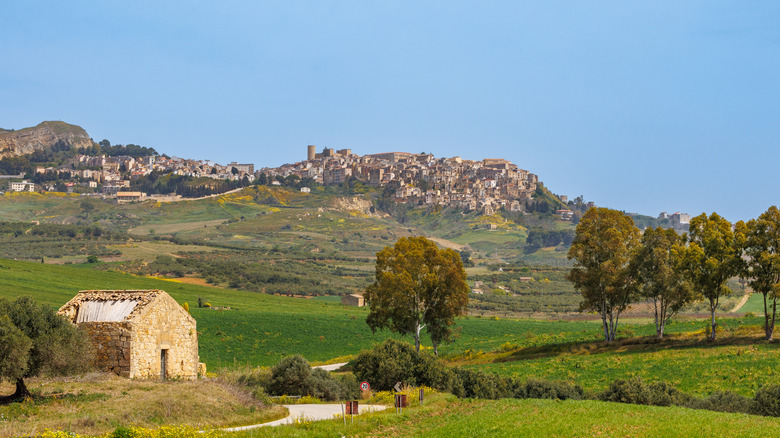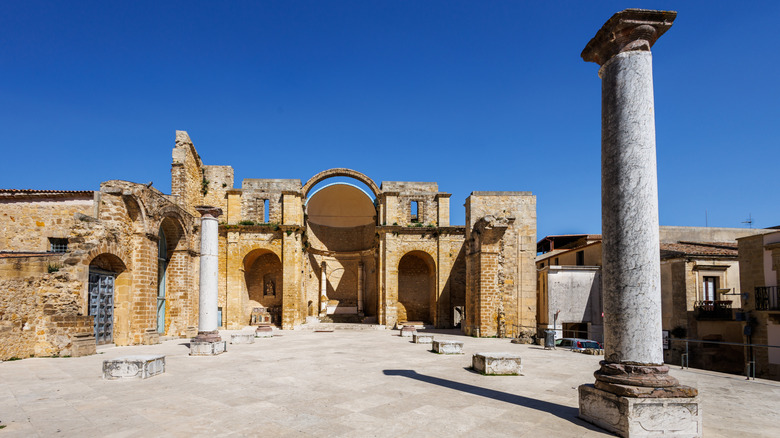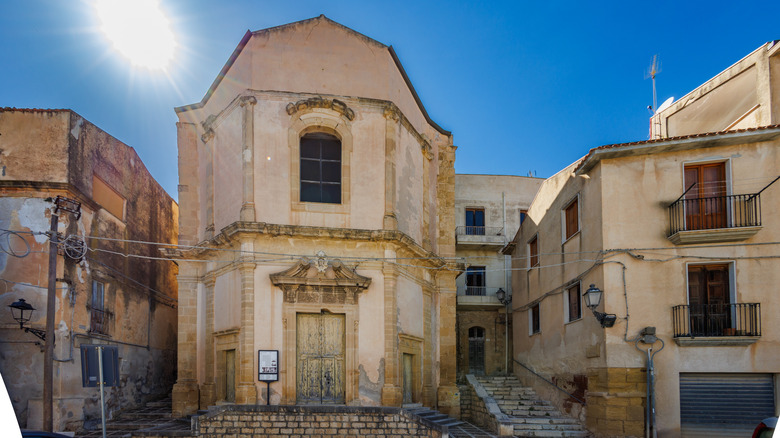This Western Sicilian Village Is A Warm, Friendly, And Underrated Gem Of Rolling Hills And Olive Groves
Sicily has numerous claims to fame: On one hand, there's Mount Etna, Europe's tallest active volcano, and on the other, some of the most picturesque beaches in the Mediterranean. It's a place where history runs deep, the scenery is spectacular, and the food is second to none — Sicily is considered by Rick Steves to have the best food in Italy. While most travelers are familiar with Sicily as a destination, few realize just how vast it is. With nearly 400 independent cities, there are countless towns waiting to be explored beyond the well-trodden paths. One hidden gem is Salemi, a small town with a fascinating past, an ancient archaeological site, and a valley brimming with vineyards framed by rolling hills and olive groves.
Salemi's history stretches back to the Elymians, one of Sicily's earliest civilizations, and it later flourished as an Arab spice trading hub. In the 19th century, it played a key role in Giuseppe Garibaldi's unification of Italy. Salemi's medieval old town, topped by an impressive castle, is a preserved reminder of the past. While Salemi isn't directly on the coast, its location in the Belice Valley means visitors can easily reach both the northern and southern shores of Sicily. It's also a convenient base for exploring some of western Sicily's most captivating spots, including the salt flats of Trapani on the coast.
What to see and do in Salemi
Before there was Rome, there was Salemi. This town has been continuously inhabited since around the 11th century B.C. (Ancient Rome was founded in the 8th century B.C.). This Sicilian destination's Mokarta archaeological site, located just outside the town, reveals traces of an ancient Capannicular village, complete with circular huts and a necropolis. Over the centuries, Salemi has passed through the hands of the Greeks, Romans, Byzantines, and Arabs, each leaving their mark on the town's culture and architecture. But perhaps its most defining moment came in the mid-19th century, when Giuseppe Garibaldi proclaimed Salemi the first capital of Italy, raising the Italian flag from the town's Arab-Norman Castle, which still stands proudly in the medieval center. Built in the 11th century, the castle is well preserved, and visitors can climb its tower for sweeping views of the surrounding rolling hills and olive trees.
Beyond the castle, Salemi's historic core is a lattice of charming piazzas, traditional Sicilian homes, and ancient ruins. At Piazza Alicia, you'll find the remnants of the Chiesa Matrice, a 17th-century church, along with an open-air square that has long served as a gathering place for festivals and cultural events. Just steps away is the Salemi Museum Complex, housed in a former Jesuit College. This collection of five museums offers a glimpse into the town's past and traditions. The Museum of Sacred Art showcases intricate Baroque and Renaissance votive statues, while the Pietra Campanedda Museum highlights the town's unique yellow-pink sandstone. For those intrigued by Sicily's darker history, the Mafia Museum presents a sobering look at the Sicilian Mafia through a labyrinth of preserved newspaper articles and historical exhibits.
Tips for dining and staying in Salemi
A visit to Salemi isn't complete without experiencing its local flavors and hospitality. For your morning espresso or an afternoon aperitivo, head to one of the town's two espresso bars: Extra Bar or Bar Tazze Pazze, where you can sip coffee and chat with the warm and friendly locals. If you're a fan of craft beer, Picara Brewery offers a selection of locally brewed options. For a full meal, La Giummara is a top-rated spot, with 4.5 stars on Tripadvisor, particularly complimented for its seafood pasta and couscous. Accommodation options range from historic bed and breakfasts in the Old Town to agriturismos (farm stays) in the surrounding countryside. Prices are affordable, typically ranging from $50 to $100 per night.
Many say the best time to visit Salemi is in spring, when the vineyards and countryside are lush and in bloom. Another good option is to go in August, when the town comes alive for the Festival of Busiata, a celebration of the local hand-rolled pasta, often served with a rich tomato or pesto sauce. Getting to Salemi is straightforward — the nearest major airport is Trapani-Birgi Airport (about 45 minutes away), while Palermo's airport is closer to an hour's drive. Although Salemi itself isn't a coastal town, some of Sicily's best beaches are within reach, including the turquoise waters of Cala Rossa, located about an hour's drive to the north.


